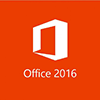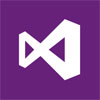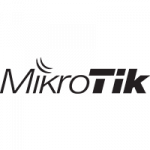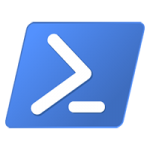Windows 10 available on July 29
Microsoft has announced the release of the new operating system, Windows 10, on July 29 this year. Windows 10 is designed to run on the broadest device family ever, including, and not limited to, Windows PCs, Windows tablets, Windows phones, Windows for the Internet of Things, Microsoft Surface Hub, Xbox One and Microsoft HoloLens.
The vision of this new operating system is to give users the feeling of more personal computing, trust in protection and respecting the personal information, mobility across various devices, and natural interaction including speech, touch, ink and holograms.
Features:
- Start menu – Windows 10 brings it back
- Much faster than previous versions
- Quick startup and resume
- Windows Defender for free anti-malware protection
Range of innovations:
- Cortana – personal digital assistant on PC and smartphone; interaction is natural and easy via talking or typing. Cortana learns your preferences to provide relevant data.
- Microsoft Edge – all-new browser with built-in commenting on the web via typing or inking, sharing comments and a reading view that helps read web sites faster and easier. Together with Cortana it offers quick results based on your preferences.
- Office on Windows – in addition to the Office 2016 desktop suite, Windows 10 users will have access to new universal Windows applications for Word, Excel and PowerPoint, all available separately. With new touch-first controls in Excel you can create or update spreadsheets without a keyboard or mouse. OneNote and Outlook will be included as well.
- Xbox Live and integrated Xbox App – new game experience in Windows 10 for both PCs and tablets. You can play games on your PC, streamed directly from your Xbox One console to your Windows 10 tablets or PCs, within home. You can communicate with your friends on Win 10 PCs and Xbox One while playing any PC game. Capture, edit and share with Game DVR, and play new games across devices.
- Photos, Videos, Music, Maps, People, Mail and Calendar apps – updated design that looks and feels familiar from device to device. It is easy to start something on one device and continue it on another since the content is stored and synched through OneDrive.
- Windows Continuum – enables today’s laptops and 2-in-1 devices smooth transition of the tablet into PC and back. New Windows phones can be connected with Continuum to a monitor, mouse and keyboard to make the phone work like a PC.
- Windows Hello – uses biometric authentication of your face, iris or finger providing instant recognition, and there is no need to log in with password.
- Windows Store – easy install and uninstall of trusted applications, supported by the broadest range of global payment methods.
On July 29, you can get Windows 10 for PCs and tablets by taking advantage of the free upgrade offer, or on a new Windows 10 PC from your favourite retailer. The Windows 10 upgrade is designed to be compatible with your current Windows device and applications.
You can reserve your free Windows 10 upgrade now through a simple reservation process. Look for this icon in your system tray at the bottom of your screen, simply click on the icon, and then complete the reservation process.
If you would like to learn more on how to update your current Windows to Windows 10 read more about it here.
Posted in Microsoft, Tech News.
Tagged Microsoft, Windows, Windows 10
Microsoft releases Office 2016 Preview
Microsoft Office 2016 is still in development and Microsoft offers any enthusiast to try out the new version and help them with feedback and provide insight. It is highly recommended that only users that are comfortable with installing and uninstalling programs, troubleshooting, backing up data and trying out new things, participate.
It supports PCs or Windows tablets running Windows 7 or higher and is available in the following languages: English, Arabic, Brazilian (Portuguese), Chinese Simplified, Chinese Traditional, Czech, Danish, Dutch, Finnish, French, German, Greek, Hebrew, Hungarian, Italian, Japanese, Korean, Norwegian, Polish, Portuguese, Romanian, Russian, Slovak, Slovenian, Spanish, Swedish, Turkish, Ukrainian..
There are two ways to try out the new Office 2016 Preview.
If you do not currently have Office 365 you can download Office 2016 Preview directly for free using the links below:
Office 2016 Preview 32/64bit product key: NKGG6-WBPCC-HXWMY-6DQGJ-CPQVG
After the trial period expires, there is an option to purchase Office 365 subscription or reinstall the current version using original product key. There is no such option to run both versions of your existing Office and Office 2016 Preview.
If you do own Office 365 then there are some steps you will need to follow depending on the version you already have.
Home version
- Go to the Office My Account page
- Click Language and install options
- Click Additional install options
- Open the Version drop-down menu and select the 32 or 64-bit Office 2016 Preview
This will install the Office 2016 Preview on your device. You will stay on the Office 2016 Preview track until you uninstall the Office 2016 Preview or until Office 2016 is released.
Enterprise version
- Sign in to the My Software page
- Go to Try the next version of Office
- Click Install
This will install the Office 2016 Preview on your device.
Office 365 administrators with an Office 365 ProPlus subscription can now enable the Office 2016 Preview for their organization by turning on First Release. You can read more about it here.
The Office 2016 Preview will be available until you uninstall the Office 2016 Preview or until Office 2016 is released.
Posted in Microsoft, Software Releases.
Android and iOS Apps in Windows 10
Microsoft has a vision to make Windows 10 the platform for developers, giving them the ability to cover phone, tablet, PC, hybrid and console. As there is a free upgrade for Windows 7 and 8 users to Windows 10, the company has an ambitious goal to reach 1 billion users on the Windows 10 family within 3 years of launch.
Microsoft announced their effort to bring developers and their apps to Windows in 4 steps.
Make it easy for web developers to present their sites as apps. It was already announced at Mobile World Congress earlier in the year. More specifications can be found here.
Allow developers to specially prepare existing Windows apps, whether Win32, .NET WinForms, .NET WPF, or any other Windows development technology and sell them through the Windows Store. The difference between the traditional installation and Store apps installation is that it will be installed, updated and uninstalled in a clean way to motivate users to try out new apps without the fear of too much of a hassle.
Give the opportunity to Android and iOS developers to take their iOS apps and build them for windows. Microsoft has developed an Objective C toolchain and middleware layer that provide the operating system APIs that iOS apps expect. (As an example King’s Candy Crush Saga for Windows Phone being one of the first apps built this way – only a few percent of the code had to be changed in order to fully port it in Windows phone.)
Allow Android apps to run in Windows Mobile, which is an official name for Windows on phones and sub-8 inch tablets. It will include an Android runtime layer that will let them run existing Android apps (both Java and C++) unmodified. Unlike Islandwood, which will require developers themselves to recompile their software to bring it to Windows, Astoria will in principle work with any old APK, without requiring the developer to do anything but publish the app in the store, as long as the APK sticks to the APIs that Astoria will provide.
There are two aspects to Android:
- Android Open Source Project (AOSP) – a mix of GPL and BSD-licensed open source code that anyone can take and fork
- Google Mobile Services (GMS) – an ever expanding closed-source set of applications and APIs that Google develops.
Microsoft did confirm that the supported proportion of AOSP and GSM would not be 100% in Astoria, however it will offer some integration points so that developers can with minor alterations support features like Cortana (personal digital assistant on PC and smartphone). The strategy is to allow developers to use the code they already have and encourage them to make Windows apps.
Microsoft launches Visual Studio Code
Visual Studio Code is a lightweight cross-platform code editor for writing web and cloud applications run under OS X, Linux and Windows. It is currently still in preview but it shows Microsoft’s commitment to support other platforms than Windows only.
Even though Windows is the most used development environment for .NET applications, Microsoft is trying to approach other environments as well instead of forcing the people to convert to Windows.
This new editor is partly based on Monaco editor for Visual Studio Online, with some features from Visual Studio language, including Roslyn project and .NET compiler platform.
Visual Studio code offers:
- Built-in support for multiple languages
- Rich code assistance
- Navigation for languages (JavaScript, TypeScript, Node.js, ASP.NET 5
- Set of additional tools
Standard tools of Visual Studio code:
- Modern code editor
- Syntax highlighting
- Customizable keyboard bindings
- Bracket matching
- Snippets
Visual Studio Code will be available in other editors as well, including Sublime Text, Vi and Atom.
Visual Studio Code is available on OS X, Windows and Linux (both 32bit and 64bit) and can be downloaded for free here.
Posted in Microsoft, Software Releases.
Tagged Microsoft, Visual Studio Code
CLion is now available to download
JetBrains, the creators of many amazing tools for software developers released a new IDE called CLion.
CLion is a powerful IDE that can be used to develop C and C++ applications on Linux, OS X and Windows, enhancing your productivity with a smart editor, code quality assurance, automated refactorings, and deep integration with CMake build system. Moreover, CLion provides support for JavaScript, XML, HTML and CSS.
The main features of CLion consist of:
CMake – a build system that is used as a project model, which takes the information about your project from CMake files. All the changes are handled automatically and can be configured in Preferences.
An editor and one-click navigation to help you code easily:
- Smart auto completion filters the suggestions to match the left value type.
- Multiple cursors handle several editing tasks at a time.
- Code auto formatting takes care of the preferred coding style guidelines.
- Keyboard shortcuts help you select, rearrange and comment your code quickly.
Parameter info feature – can be used if you are unsure which function to use. It consists of all possible function signatures and parameters.
Fast project navigation – a very helpful feature which is included, as well as search abilities.
Code analysis – allows you to simply do even far-reaching changes, like renaming a symbol.
Integrated debugger – used for in-depth look into the execution of the code, providing a built-in debugger, able to add watches, evaluate expressions, change values and many more.
CLion integrates with popular version control systems, including Subversion, Git, GitHub, Mercurial, CVS, Perforce, and TFS.
Paid commercial and personal licenses are available at https://www.jetbrains.com/clion/buy/. If you are interested to try it out, there is a 30-day free trial version which you can download here.
If you are interested in learning more about CLion you can check out the guides and videos at https://www.jetbrains.com/clion/quickstart/.
Posted in Software Releases.


























